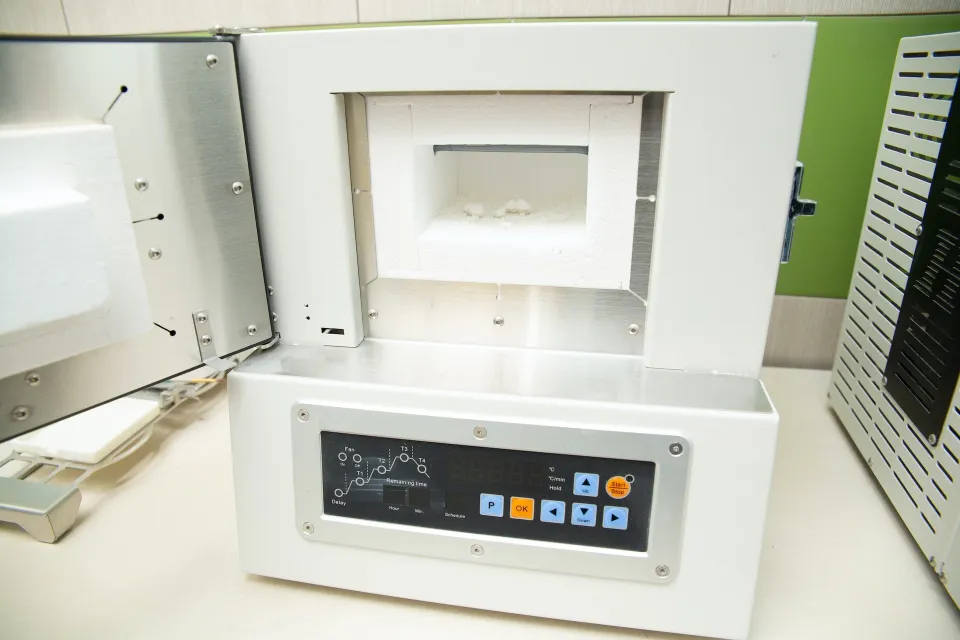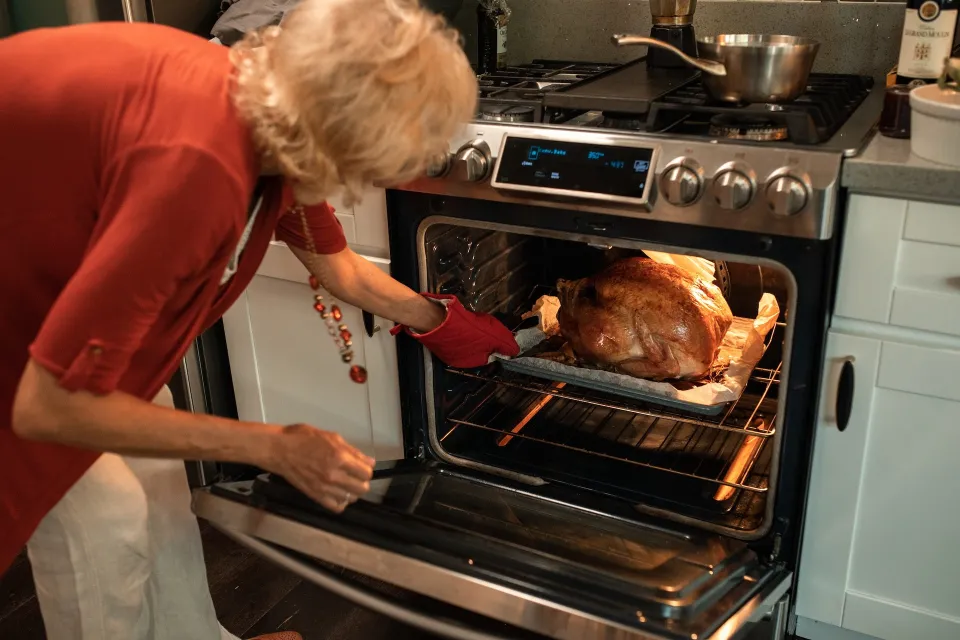Whether you are going to roast a turkey for a family dinner or going to treat industrial materials, you will need an oven. An oven is any compartment that precisely heats its content for a definite period. The two main types of ovens in this article are industrial ovens and food ovens.
Even though both of these ovens heat the substance within them, they are altogether different from each other. So, if you want to know what an industrial oven is and how it differs from a food oven, let’s find out!
What is An Industrial Oven?
An industrial oven is like a super-sized oven you might have in your kitchen, but it’s used in big factories and businesses. Its main job is to heat, bake, or remove moisture from them.
Think about making cookies in your kitchen oven. You put the cookie dough in, and the oven’s heat makes the cookies taste nice and crispy. An industrial oven does something similar, but it’s used for much larger and more complex things.
For example, imagine a car manufacturing factory. They might use an industrial oven to heat metal parts to be bent and shaped into the proper form for the vehicle. Or, in a bakery, an industrial oven might be used to bake a huge batch of bread at once.
The cool thing about these ovens is that they can be controlled very precisely. It is important because different materials and products need different heat levels to turn out just right. Industrial ovens allow for consistently maintaining the proper temperature, which is essential for producing high-quality goods.
In simple terms, an industrial oven is a big machine that helps factories and businesses heat, bake, or dry things in a precise and controlled way to make various products we use daily. So, one thing is clear: you cannot use an industrial oven for home or commercial use.

What Are The Different Types of Industrial Ovens
There are various kinds of industrial ovens. However, we have only covered five of these ovens here since they are the most popular ones on the market.
1. Batch Ovens
These ovens are like the ones you might have in your kitchen but much more significant. They’re used when a company needs to heat a specific amount of products simultaneously. Think of a bakery making batches of bread or cookies.
Industrial batch ovens work similarly, where a batch of items is placed inside, the oven heats up to the required temperature, and the items are cooked or processed. After one batch is done, the next one can go in. They’re commonly used for baking, curing product coatings, or heat-treating materials.

2. Conveyor Ovens
Imagine a long oven with a moving conveyor belt going through it. Products are placed on the conveyor belt and travel through the oven, getting heated as they move along. This type of oven is used when a company needs to process a continuous flow of items.
For example, in a food production line. Conveyor ovens can also bake or cook food items as they pass through. They’re also handy for drying and curing processes in textiles or electronics manufacturing industries.
3. Drying Ovens
Drying ovens remove moisture from products, like leaving wet clothes out to dry. These ovens carefully control temperature and airflow to evaporate moisture from items gently.
To understand more about drying ovens, think of a company that produces painted metal parts. They can place these parts in a drying oven to ensure the paint dries appropriately and sticks well. Drying ovens are also used in pharmaceuticals and ceramics to remove moisture from various products.
4. Curing Ovens
Imagine you’ve painted a piece of wood and want the paint to become solid and durable. Curing ovens helps with that. They raise the temperature of the painted item to a specific level and hold it there for a set amount of time. This controlled heating helps the materials in the paint or coating chemically bond and harden.
Curing ovens are commonly used in industries like automotive manufacturing, which cure paints and coatings on car parts.
5. Annealing Ovens
To understand this type of oven, let’s take an example of a piece of metal that’s been through a lot and has become quite complex and brittle. Annealing ovens heat the metal to a specific temperature and then slowly cool it down. This process relieves internal stresses in the metal and makes it softer and more flexible.
It’s like allowing the metal to relax and become more accessible to work with. Annealing ovens are crucial in industries with metals, like manufacturing tools or shaping metal components.
How is An Industrial Oven Different From A Food Oven?
By now, you know well about the industrial oven and its types. But our question remains, dealing with how it differs from food ovens. Even when the difference is evident from the names, there is much more to know about this story.
So, without further delay, let’s discuss this in detail.
| Aspect | Industrial Oven | Food Oven |
| Size and Capacity | Larger with higher capacity | Smaller with limited capacity |
| Temperature Range | Operates at higher temperature ranges | Operates at lower temperature ranges |
| Function and Purpose | Used for industrial processes | Used exclusively for cooking and baking |
| Construction/Materials | Heavy-duty components for durability | Materials suitable for cooking and aesthetics |
| Control Systems | Advanced control for precise industrial processes | Simpler controls for cooking and baking |
1. Size And Capacity
Industrial Oven: Compared to food ovens, industrial ovens are often more giant and have higher capacity. They are made to handle vast batches of items, such as processing bulk materials or curing coatings on industrial equipment.
Food Oven: Food ovens are generally smaller and designed for household or commercial cooking. They have smaller capacities and are intended for baking, roasting, and cooking food items.

2. Temperature Range
Industrial Oven: Industrial ovens often operate at higher temperature ranges. This feature can vary depending on the specific application. For example, when used for heat treatment, they can reach incredibly high temperatures.
Food Oven: Food ovens typically operate within a lower temperature range. Hence, it is suitable for cooking or baking food, usually around 500 degrees Fahrenheit (260 degrees Celsius).
3. Function And Purpose
Industrial Oven: Industrial ovens are used for various industrial processes such as curing, drying, heat treating, sterilizing, annealing, and more. They are essential for manufacturing and processing non-food items like metal, ceramics, electronics, and chemicals.
Food Oven: Food ovens are designed exclusively for cooking and baking food items, ranging from bread and pastries to meats and vegetables.
4. Construction And Materials
Industrial Oven: Heavy-duty components are used in industrial oven construction to endure harsh chemicals, high temperatures, and everyday wear and tear. They are made to last and be used for a long time.
Food Oven: Food ovens are constructed with materials suitable for cooking and baking, often including stainless steel or enamel coatings. They prioritize aesthetics and ease of cleaning.
5. Control Systems
Industrial Oven: Industrial ovens feature advanced control systems that allow precise regulation of temperature, airflow, and humidity. This ensures consistent and repeatable industrial processes.
Food Oven: Food ovens have simpler control systems tailored for cooking and baking needs. They may include features like timers, temperature settings, and convection settings. However, the controls are generally less complex than those in industrial ovens.
The Bottom Line
Industrial and food ovens, their culinary counterparts, transform our world in a dance of heat and innovation. The industrial giant creates marvels from metals and other elements, while the food oven creates feasts out of flavors. They make up an exciting story of heat development since they differ in size, temperature, function, construction, and control. Although their tasks vary from factories to kitchens, they work together to create the symphony of change that characterizes our modern era.